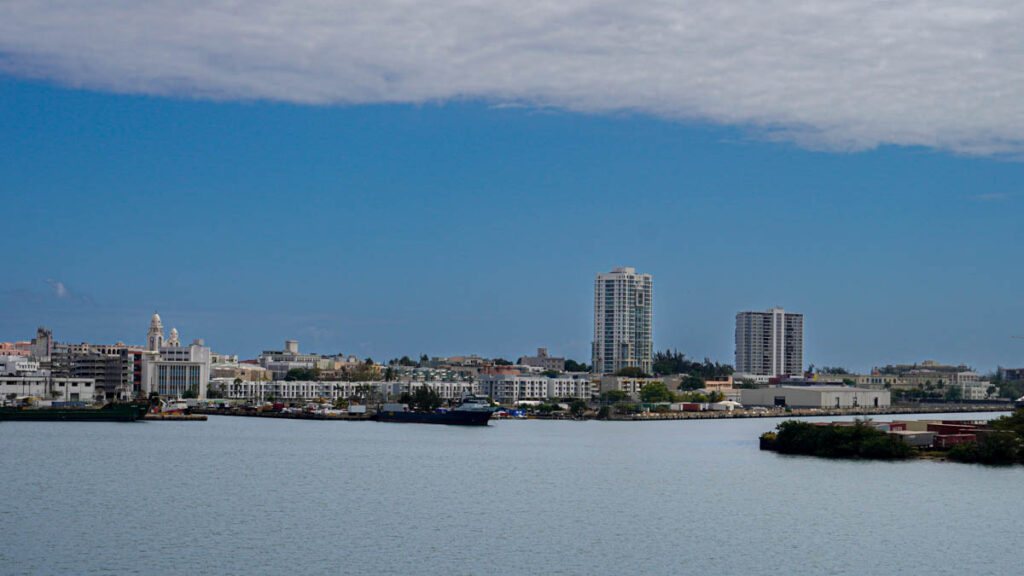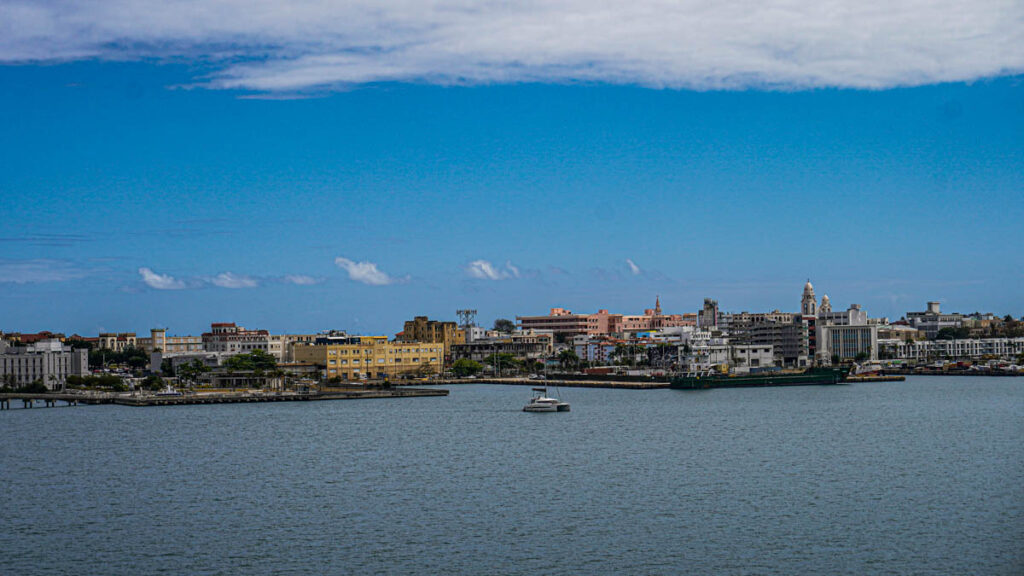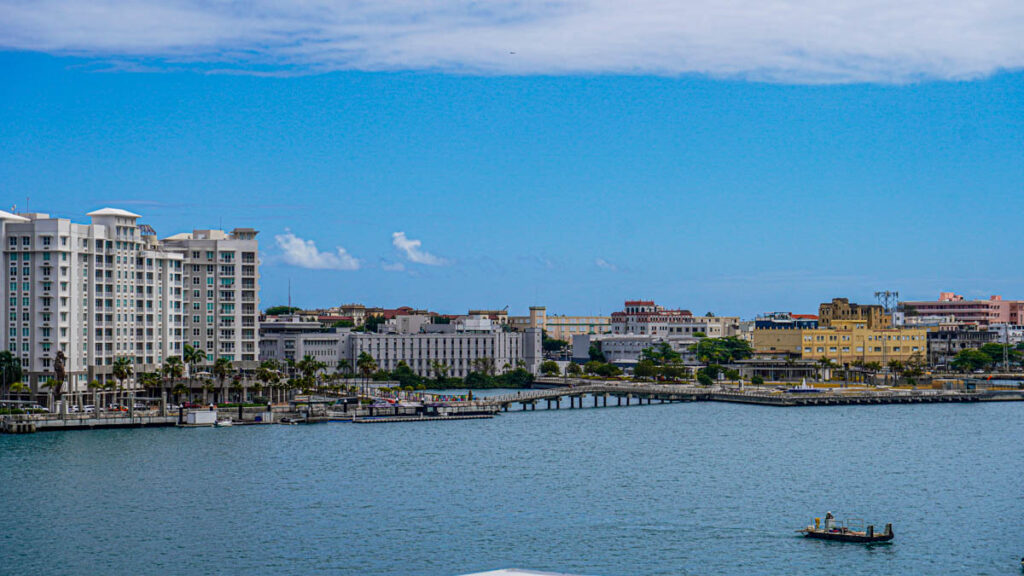Porto Rico and Puerto Rico
I apologize for any confusion. “Porto Rico” is an older spelling of “Puerto Rico.” The current and widely accepted spelling is “Puerto Rico.” The name “Puerto Rico” translates to “Rich Port” in Spanish, referring to the island’s natural harbor in San Juan.
Therefore, when referring to the Caribbean island, it is correct to use “Puerto Rico.” The term “Porto Rico” is an outdated variant of the name and is no longer in common use.
Welcome to the enchanting city of San Juan, Puerto Rico! Nestled along the beautiful Caribbean coast, this vibrant capital city is a treasure trove of rich history, stunning architecture, and a fusion of cultures. From its centuries-old forts to its lively streets, San Juan offers a unique and unforgettable experience for travelers. Join me as we embark on a virtual journey through the vibrant streets, indulge in the local cuisine, and immerse ourselves in the rich cultural tapestry of San Juan, Puerto Rico.

- A Historic Haven: Exploring Old San Juan Our first stop is the heart of San Juan, the historic district of Old San Juan. The cobblestone streets and colorful colonial buildings transport you back in time. Take a leisurely stroll through its narrow streets, visit iconic landmarks like El Morro and Castillo de San Cristobal, and soak in the breathtaking views of the Atlantic Ocean. Don’t forget to capture Instagram-worthy photos of the vibrant houses along Calle San Sebastián, known for its picturesque beauty.
- Delights for the Palate: Puerto Rican Cuisine No visit to San Juan would be complete without savoring the flavors of Puerto Rican cuisine. From delectable dishes like mofongo (mashed plantains) and arroz con gandules (rice with pigeon peas) to refreshing piña coladas, the local gastronomy tantalizes your taste buds. Explore local food markets like Mercado de Santurce and La Placita de Santurce, where you can indulge in a variety of traditional delicacies. Don’t miss trying the famous Puerto Rican roasted pork, lechón, which is a true culinary delight.
- Beaches and Beyond: Sun, Sand, and Adventure San Juan is blessed with some of the most pristine beaches in the Caribbean. Head to Isla Verde Beach, known for its soft white sands and crystal-clear turquoise waters, to soak up the sun and enjoy water activities like snorkeling and paddleboarding. For those seeking adventure, a day trip to El Yunque National Forest is a must. Hike through lush rainforests, discover hidden waterfalls, and marvel at the breathtaking beauty of nature.
- Vibrant Culture and Nightlife The people of San Juan are known for their warm hospitality and vibrant culture. Experience the rhythm of Puerto Rico by immersing yourself in the lively music and dance scene. Visit La Placita de Santurce in the evening, where the streets come alive with music, dancing, and vibrant street food vendors. Salsa clubs and live music venues offer the perfect opportunity to sway to the infectious beats of Latin music and learn some salsa moves.
- Shopping and Souvenirs San Juan is a shopper’s paradise, offering a wide range of options to satisfy every retail desire. Explore the high-end boutiques and designer stores in Condado or venture into the narrow streets of Old San Juan to discover unique artisanal crafts, handmade jewelry, and local artwork. Don’t forget to pick up a bottle of Puerto Rican rum, a popular souvenir, to enjoy a taste of the island even after you leave.
Conclusion: San Juan, Puerto Rico, with its captivating blend of history, culture, and natural beauty, offers an unforgettable experience for travelers. From exploring the cobblestone streets of Old San Juan to immersing yourself in the lively nightlife, this vibrant city is a destination that will leave you with lifelong memories. Whether you’re captivated by the historic forts, indulging in the delicious local cuisine, or simply relaxing on the pristine beaches, San Juan is a Caribbean gem waiting to be discovered. So pack your bags, embrace the island spirit, and get ready for an unforgettable adventure in San Juan, Puerto Rico!
The history of Puerto Rico

Puerto Rico, is an island located in the northeastern Caribbean Sea. It is an unincorporated territory of the United States. The history of Puerto Rico is rich and complex, with influences from various indigenous cultures, Spanish colonization, and its status as a U.S. territory. Here’s an overview of the history of Puerto Rico:
Pre-Columbian Era: Before the arrival of Christopher Columbus in 1493, Puerto Rico was inhabited by the Taíno people. They had a sophisticated culture, engaged in agriculture, and built settlements across the island.
Spanish Colony: In 1493, Columbus claimed Puerto Rico for Spain during his second voyage. The Spanish established the town of Caparra, which later moved to its current location and became San Juan. The island served as a Spanish military stronghold and a base for exploration and colonization in the New World.
Colonial Period: Puerto Rico became an important Spanish colony, known as the Captaincy General of Puerto Rico, with San Juan as its capital. The Spanish brought African slaves to work on sugar plantations, and the island’s economy grew with the cultivation of sugar cane, tobacco, and coffee. Puerto Rico remained under Spanish rule for over four centuries.
19th Century: In the early 19th century, Puerto Rico’s economy declined due to changes in global trade patterns. The island experienced political and economic unrest, and there were calls for independence. In 1898, during the Spanish-American War, the United States invaded Puerto Rico. Under the Treaty of Paris, Spain ceded Puerto Rico to the U.S.
U.S. Territory: Puerto Rico became a U.S. territory and underwent a period of Americanization. The U.S. enacted various economic and political reforms, including granting U.S. citizenship to Puerto Ricans in 1917. However, Puerto Ricans did not have full representation in the U.S. government, and the island’s political status remained a subject of debate.
Commonwealth Status: In 1952, Puerto Rico adopted a local constitution, establishing its status as a self-governing commonwealth associated with the United States. Puerto Rico has its own government and elects a governor, but it is subject to U.S. federal laws and oversight. Puerto Ricans are U.S. citizens and serve in the military, but they cannot vote in presidential elections unless they establish residency in a U.S. state.
Political Status Debate: The political status of Puerto Rico remains a topic of discussion and debate. There have been multiple referendums on the island to determine its future relationship with the United States. Options have included statehood, independence, and maintaining the current commonwealth status. However, there is no consensus among Puerto Ricans on the best path forward.
Hurricane Maria and Aftermath: In 2017, Puerto Rico was devastated by Hurricane Maria, one of the worst natural disasters in its history. The storm caused significant damage to infrastructure, resulted in a humanitarian crisis, and exposed longstanding economic and political challenges. Recovery efforts have been ongoing, but the island continues to face economic difficulties.
It’s important to note that this overview provides a brief summary of Puerto Rico’s history. There are many more details and complexities within each period that contribute to the island’s unique cultural and historical identity.
What you can do and visit in Puerto Rico

Puerto Rico offers a wide range of attractions and activities for visitors. Here are some popular things to do and places to visit in Puerto Rico:
- Old San Juan: Explore the historic district of San Juan, known as Old San Juan. Walk along cobblestone streets, visit iconic landmarks like El Morro and Castillo San Cristobal (fortresses), and immerse yourself in the colonial architecture, vibrant colors, and charming atmosphere.
- El Yunque National Forest: Discover the only tropical rainforest in the U.S. National Forest System. Hike through lush trails, swim in waterfalls, and enjoy breathtaking views from elevated observation towers.
- Bioluminescent Bay: Experience the magical glow of bioluminescent organisms in one of Puerto Rico’s bioluminescent bays, such as Mosquito Bay in Vieques or Laguna Grande in Fajardo. Kayak or take a guided boat tour to witness this natural phenomenon.
- Culebra and Vieques Islands: Escape to these neighboring islands, known for their pristine beaches and crystal-clear waters. Flamenco Beach in Culebra and Sun Bay Beach in Vieques are particularly famous for their beauty.
- Ponce: Visit the city of Ponce, often referred to as the “Pearl of the South.” Explore its historic downtown, stroll through the colorful Parque de Bombas (firehouse), and visit the Ponce Museum of Art, which houses a vast collection of Puerto Rican and international artwork.
- Camuy River Cave Park: Discover the impressive Rio Camuy Cave System, one of the largest cave networks in the world. Take a guided tour to explore the underground caves, sinkholes, and subterranean rivers.
- Rincon: Known as a surfing paradise, Rincon offers stunning beaches and great waves. Even if you’re not a surfer, you can enjoy the laid-back atmosphere, beautiful sunsets, and beachfront restaurants.
- Guavate: Indulge in traditional Puerto Rican cuisine, particularly lechón (roast pig), in the mountainous region of Guavate. Visit on weekends for lively music, food stalls, and a festive atmosphere.
- La Fortaleza and San Juan Gate: Take a tour of La Fortaleza, the official residence of the Governor of Puerto Rico and a UNESCO World Heritage Site. Nearby, you’ll find the San Juan Gate, an iconic entrance to the old city.
- Museums and Cultural Sites: Puerto Rico is home to various museums and cultural sites that showcase its history and heritage. Visit the Museo de Arte de Puerto Rico, Museo de las Américas, Casa Blanca, and Casa Bacardi (rum distillery) for a deeper understanding of the island’s culture.
These are just a few examples, and Puerto Rico offers much more to explore, including outdoor adventures like ziplining, surfing, and scuba diving, as well as vibrant nightlife and delicious local cuisine.
Puerto Rico or the Virgin Islands to visit

Deciding between visiting Puerto Rico or the Virgin Islands depends on your preferences and what you’re looking for in a destination. Here are some factors to consider:
- Cultural Experience: Puerto Rico offers a rich blend of Spanish, Caribbean, and American cultures. You can explore historic sites in Old San Juan, indulge in traditional Puerto Rican cuisine, and immerse yourself in the vibrant local music and arts scene. The U.S. Virgin Islands also have a unique cultural blend, influenced by Afro-Caribbean, Danish, and American traditions.
- Natural Beauty: Both Puerto Rico and the Virgin Islands boast stunning natural landscapes. Puerto Rico has the lush El Yunque rainforest, beautiful beaches along its coastline, and breathtaking bioluminescent bays. The Virgin Islands offer pristine white-sand beaches, crystal-clear waters for snorkeling and diving, and picturesque national parks like Virgin Islands National Park in St. John.
- Accessibility: Puerto Rico has a well-developed tourism infrastructure and is easily accessible from mainland United States. It has direct flights from many major cities and is a U.S. territory, which means no passport is required for U.S. citizens. The Virgin Islands also have good flight connections, but they might require additional travel arrangements if you are not already in the Caribbean region.
- Island Hopping: If you’re interested in exploring multiple islands, the Virgin Islands may offer more options. The British Virgin Islands are nearby and offer their own unique charm and attractions. Island hopping between St. Thomas, St. John, and the British Virgin Islands can be a fantastic experience.
- Historical Sites: Puerto Rico has a longer history and offers more extensive historical sites, particularly in Old San Juan. You can visit ancient fortresses, cobblestone streets, and colonial-era buildings. The Virgin Islands also have historical landmarks, such as the ruins of sugar plantations and the colonial-era buildings in Charlotte Amalie, St. Thomas.
Ultimately, both Puerto Rico and the Virgin Islands offer beautiful beaches, rich culture, and stunning natural scenery. Consider your preferences for cultural experiences, accessibility, and the specific attractions you are interested in when making your decision.
For more info please see:

